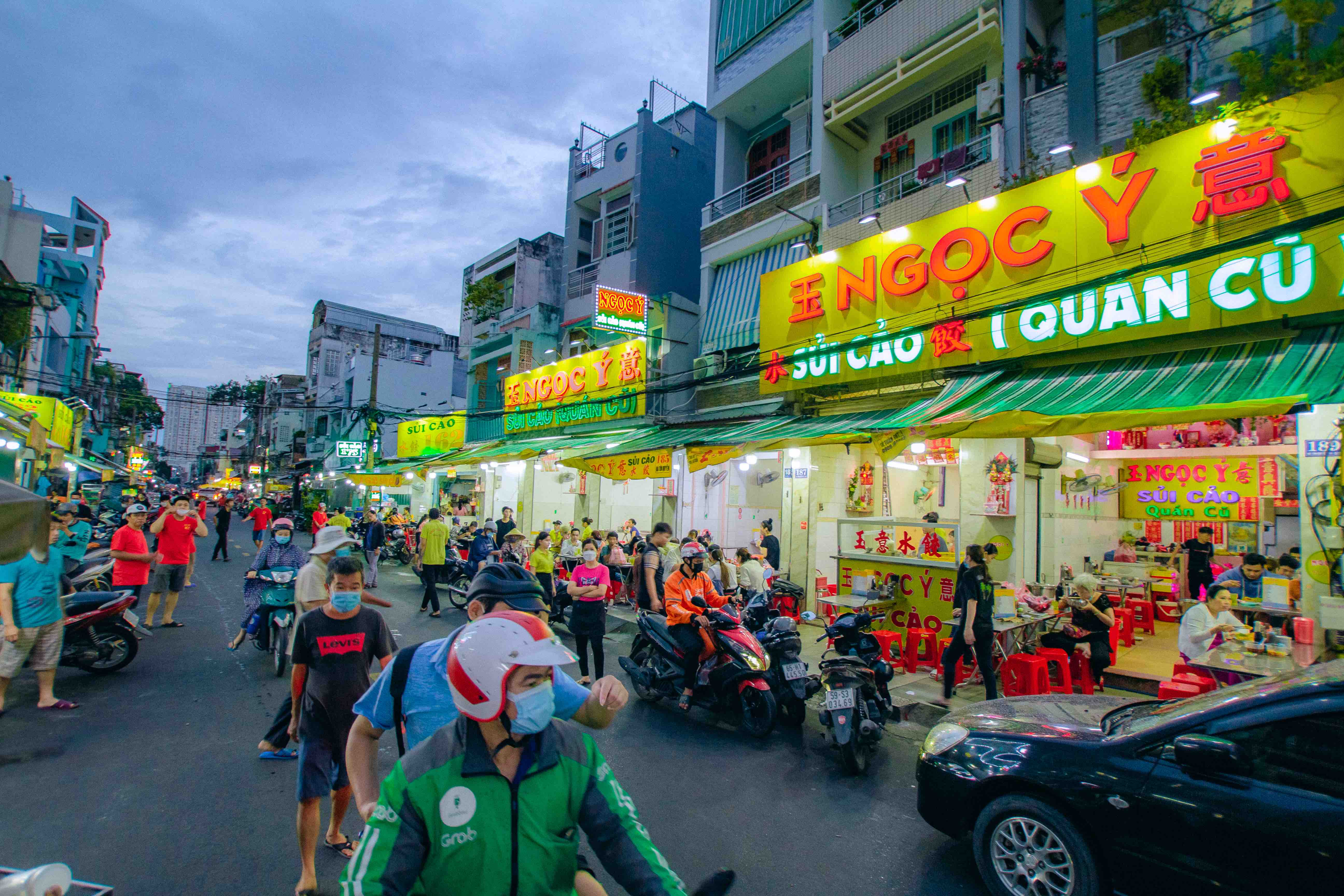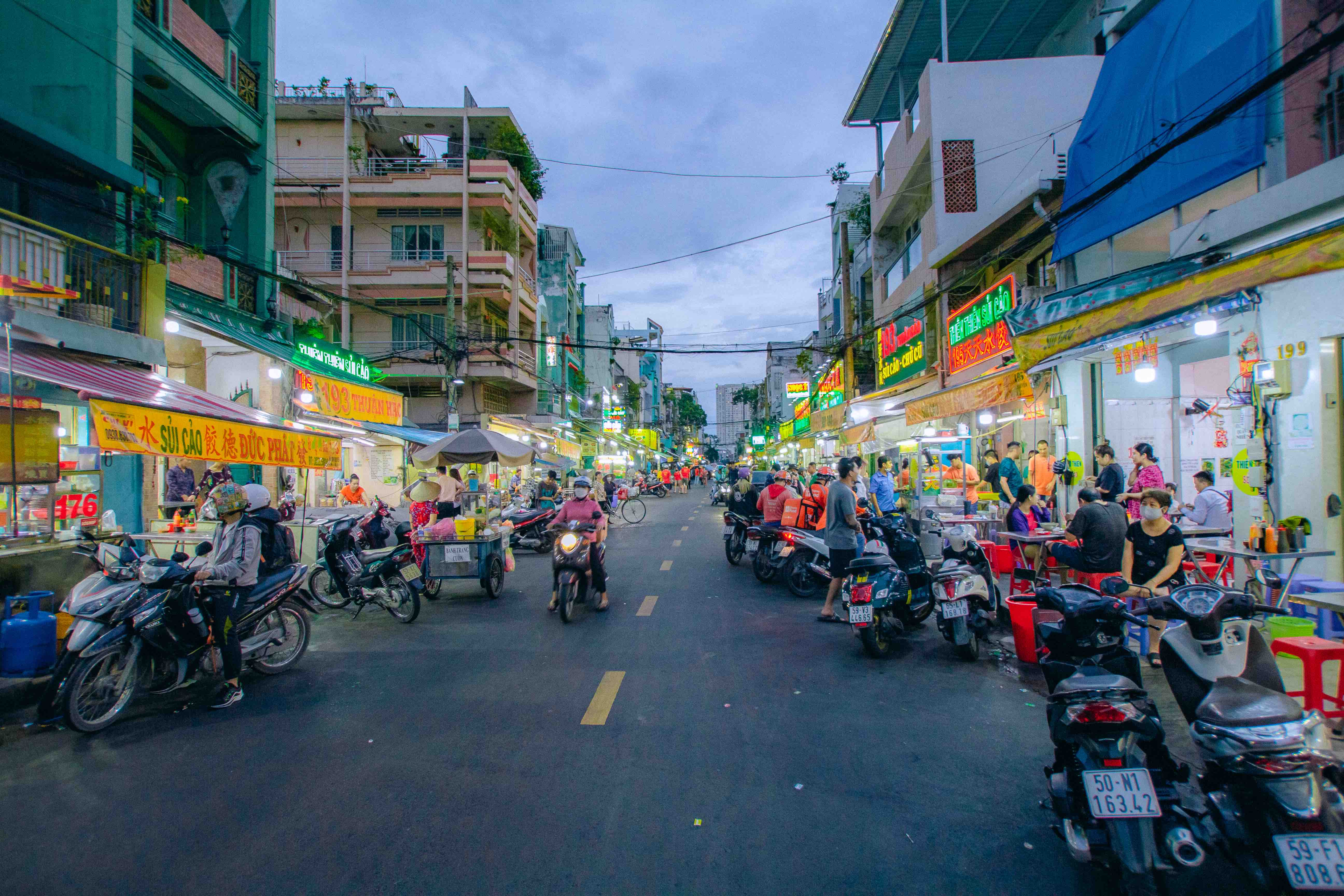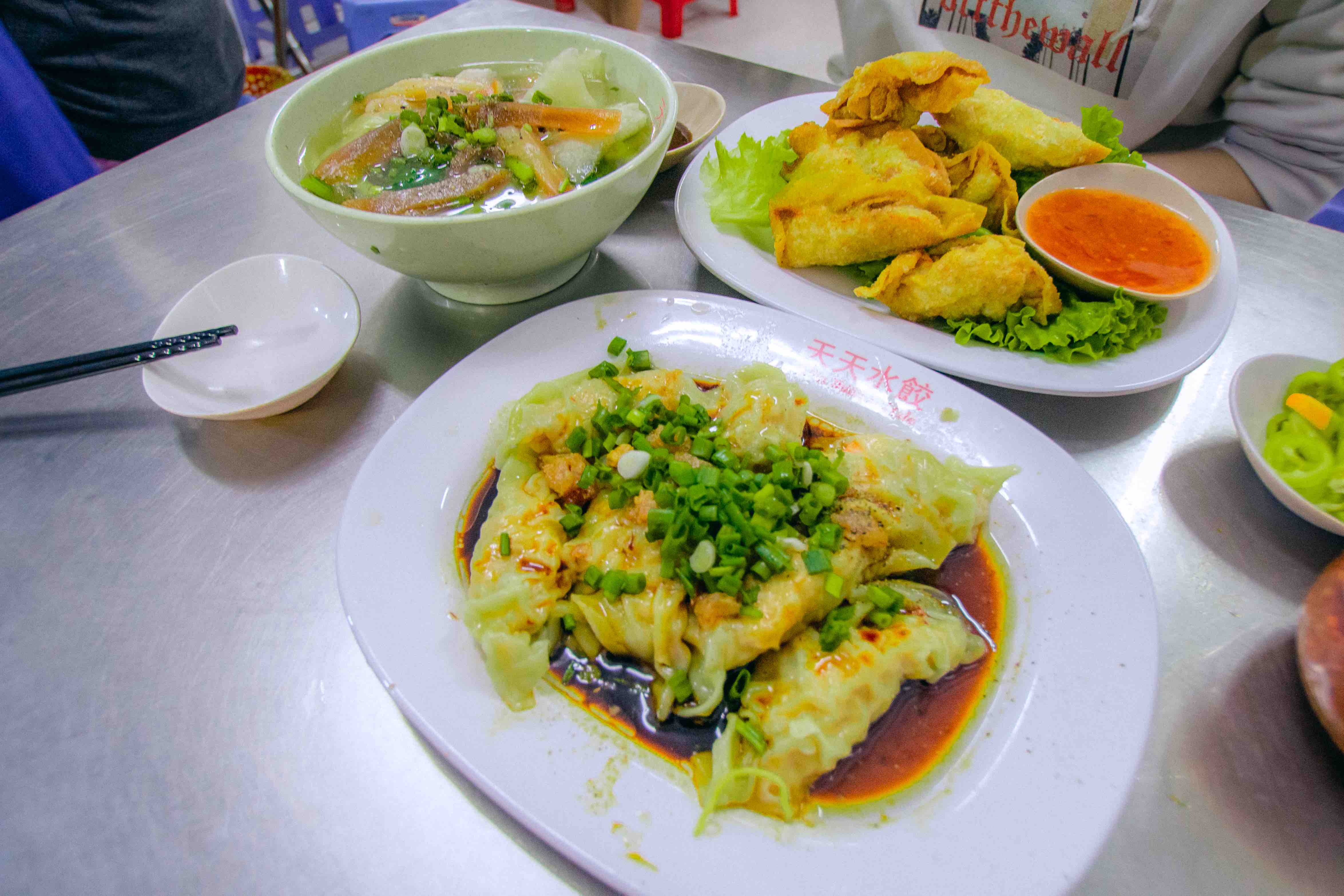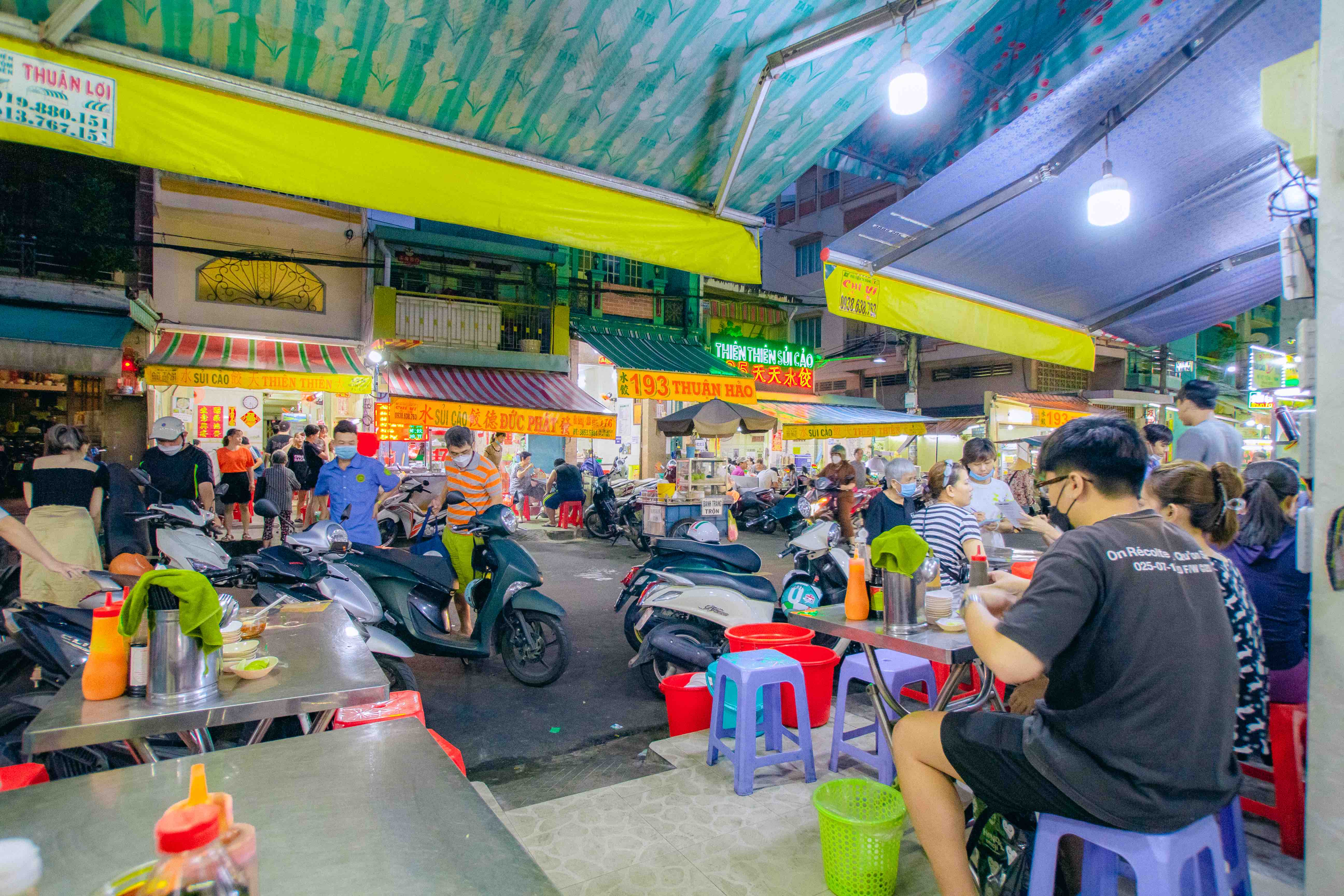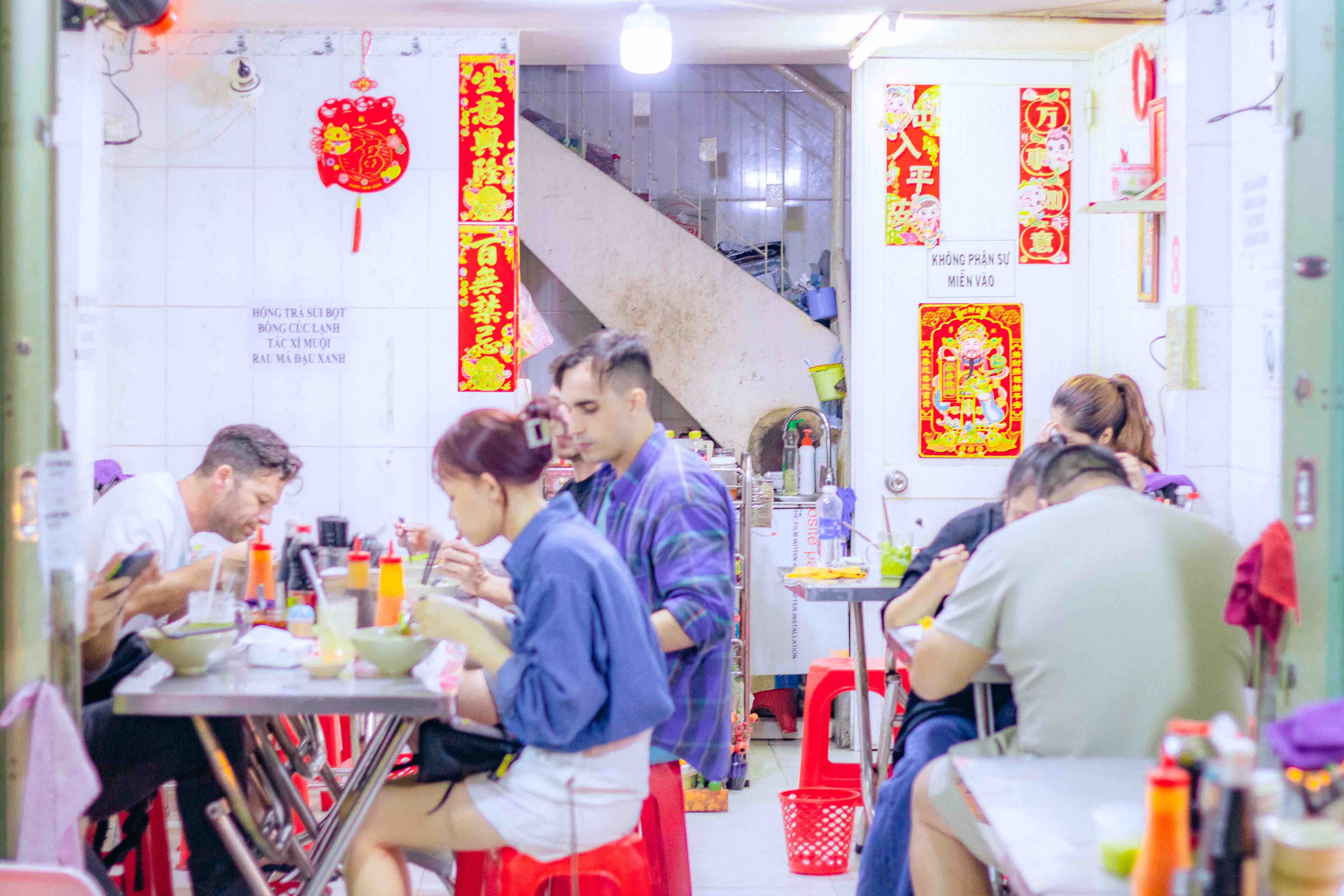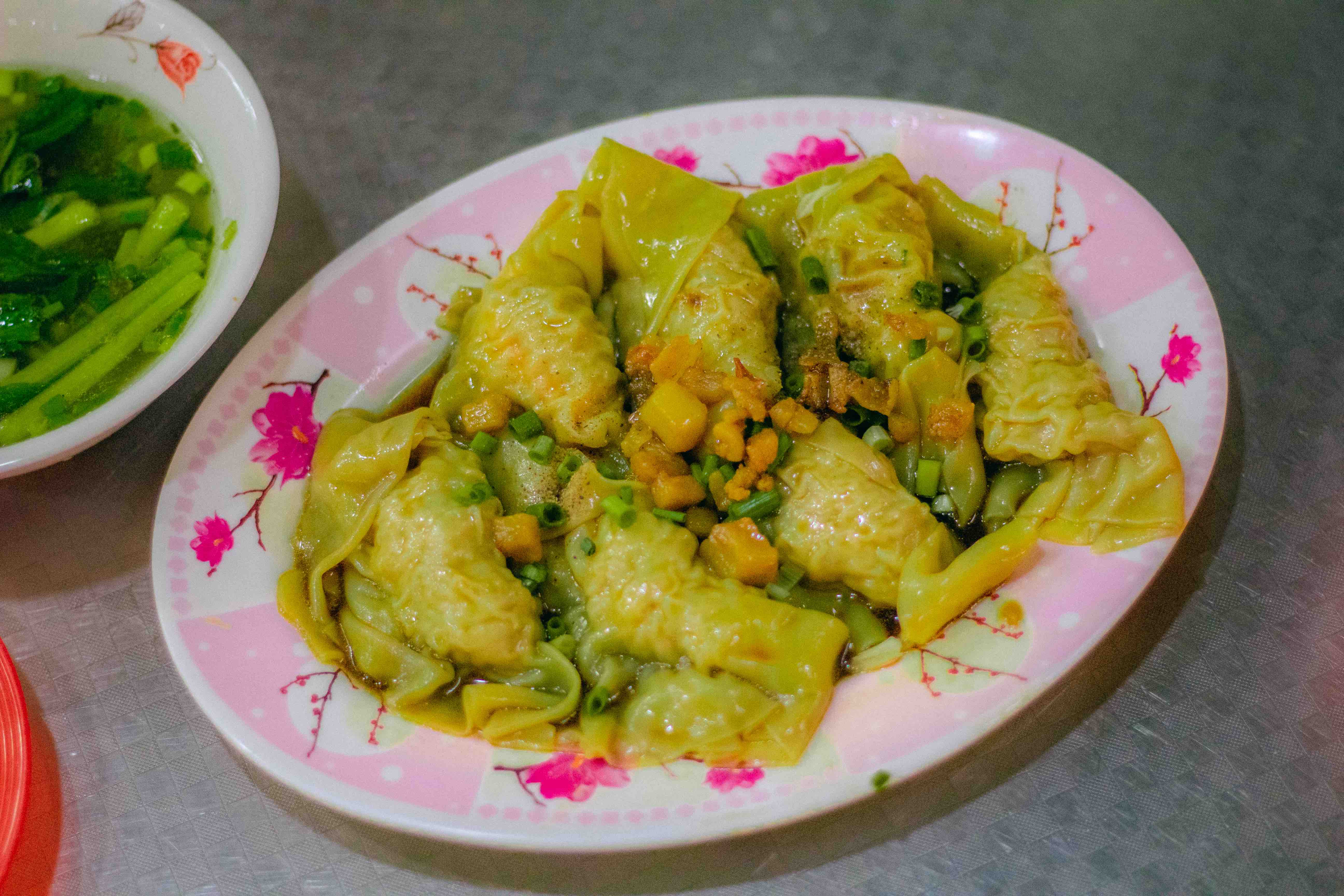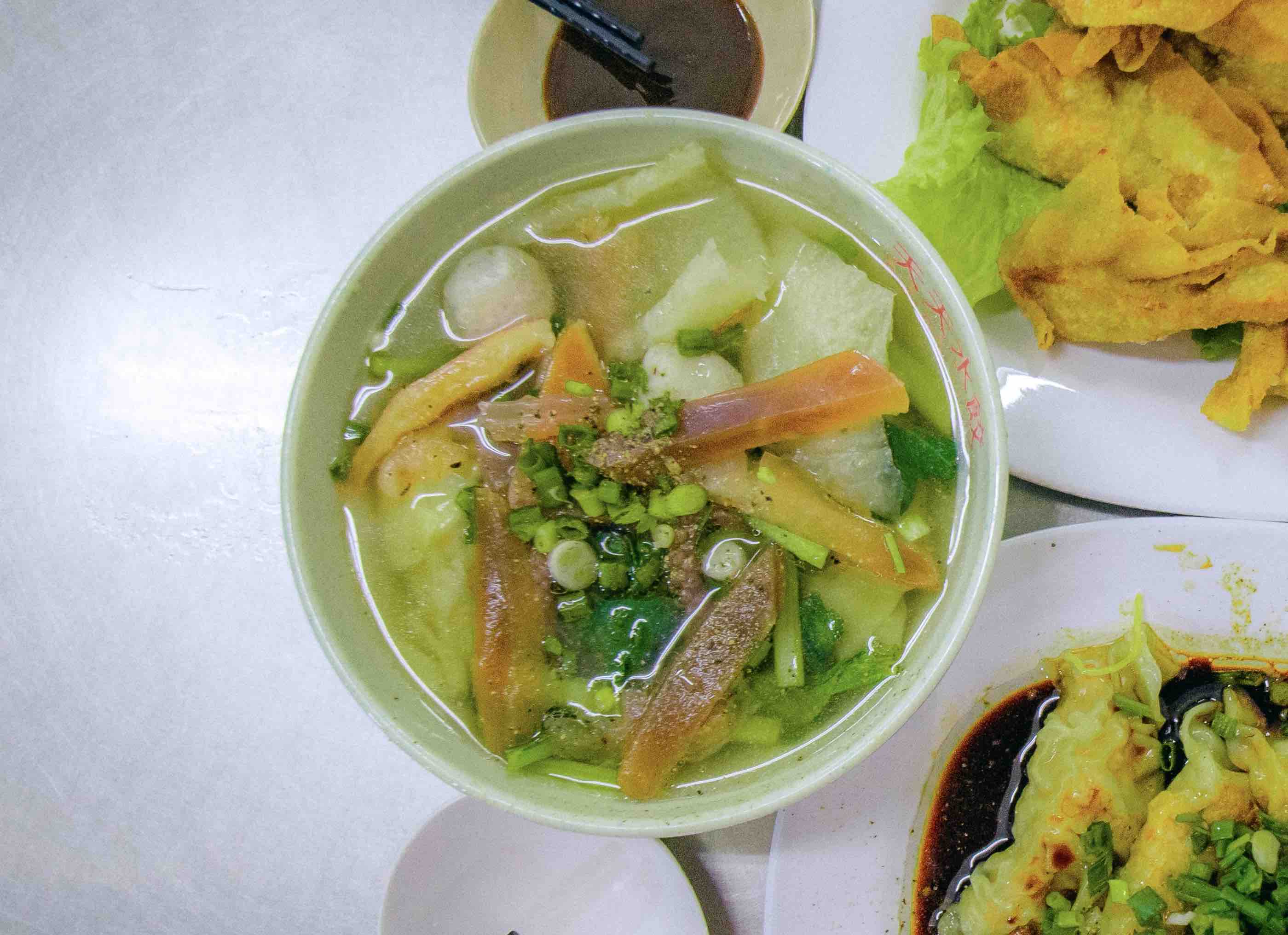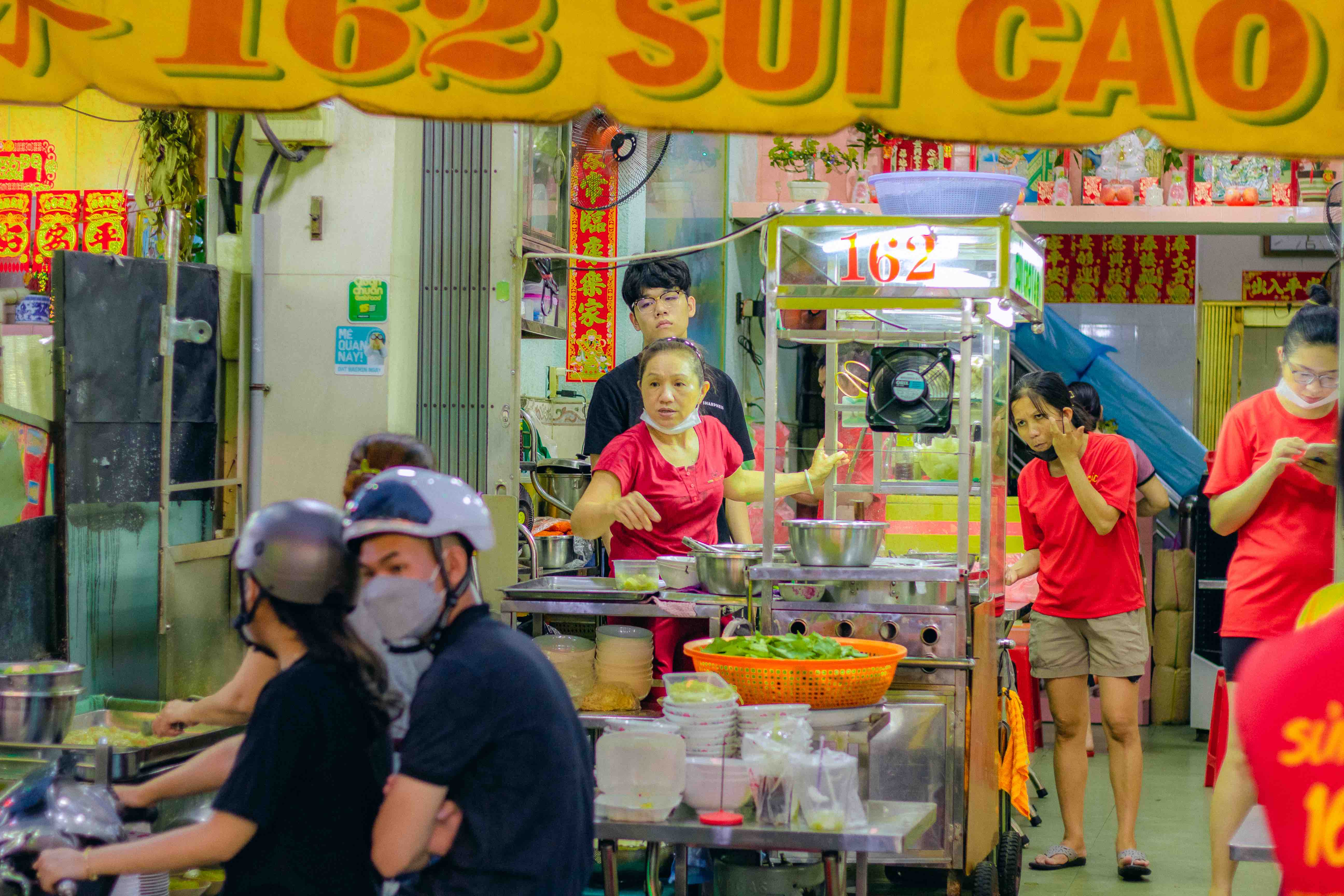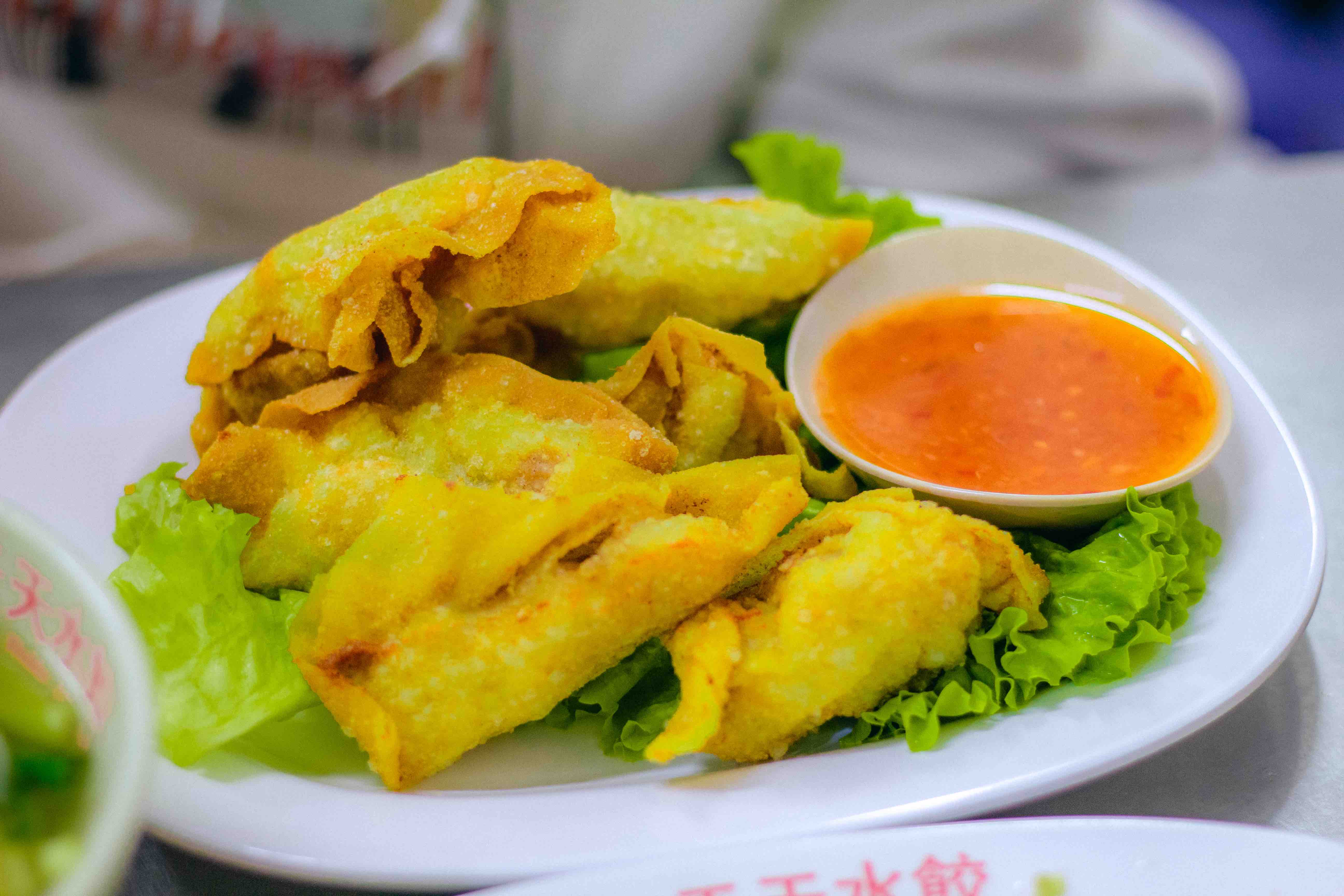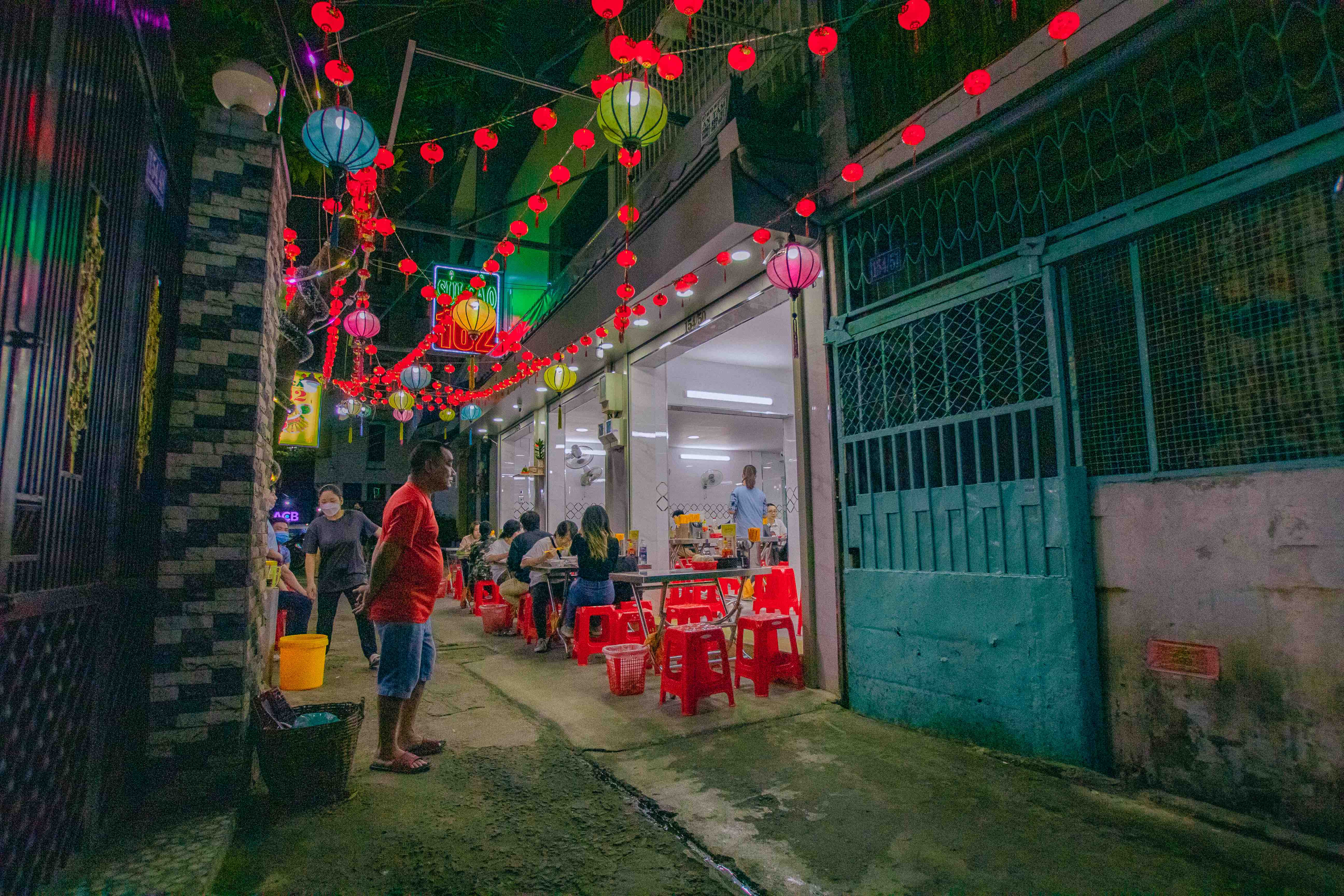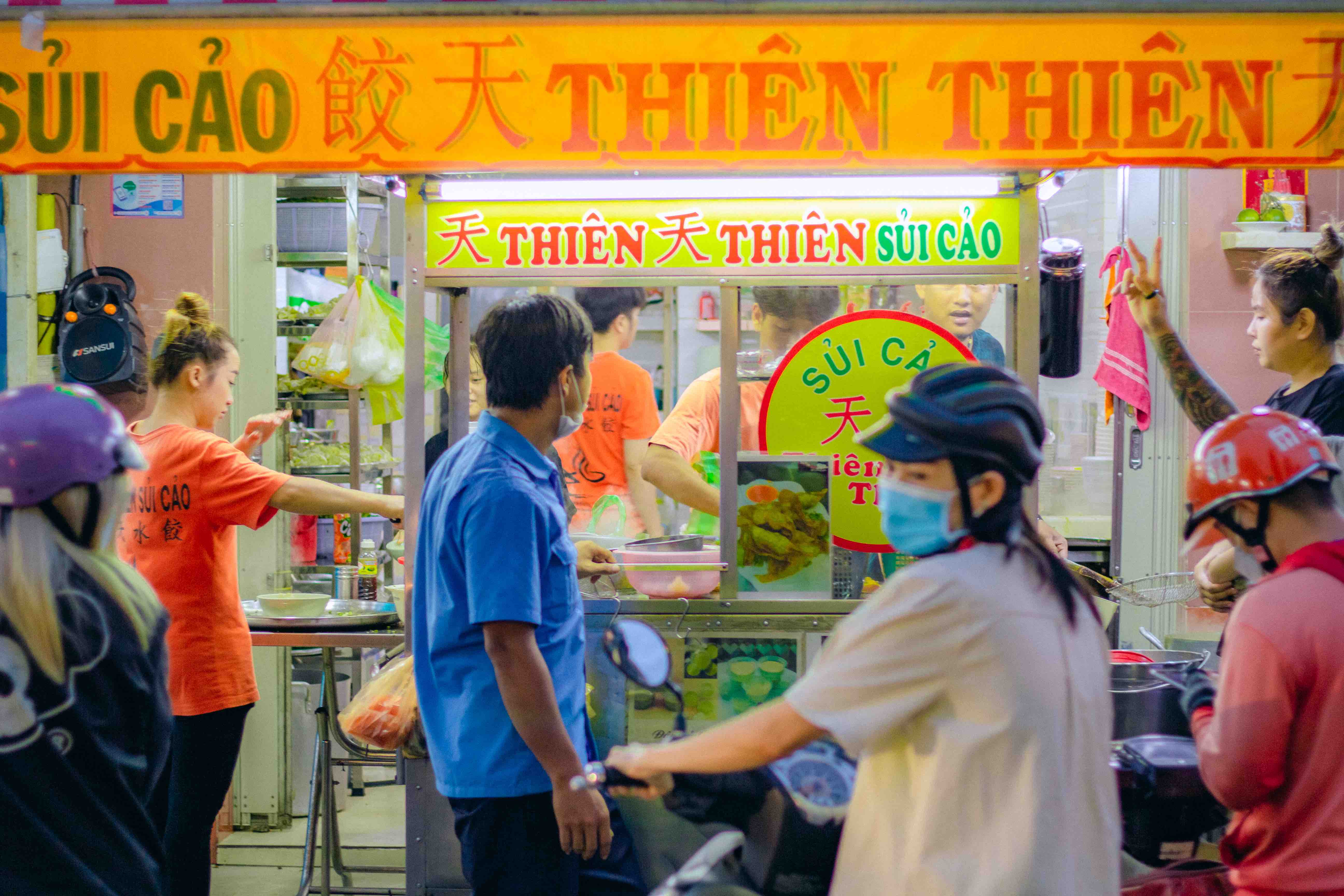Ha Ton Quyen Street in District 11, Ho Chi Minh City is known for the dozens of authentic shuijiao dumpling stalls that have popped up on its sidewalks over the past thirty years.
Growing up in a Vietnamese family of Chinese descent, I often found my younger self immersed in the whirlwind of Vietnamese-influenced Chinese culture, particularly the cuisine, that pervades the Cho Lon neighborhood covering parts of Districts 5, 6, and 11.
|
|
| Dozen of shuijiao shops are located on Ha Ton Quyen Street in District 11, Ho Chi Minh City. Photo: Linh To / Tuoi Tre News |
Some of my fondest memories from wandering the streets of Cho Lon include sampling the dozens of mouthwatering shuijiao stalls that line Ha Ton Quyen Street.
Even today, with decades between myself and childhood, merely the smell of shuijiao launches me into a state of nostalgia.
Shuijiao, known as sủi cảo in Vietnamese, is a type of Chinese dumpling stuffed with ground meat, shrimp, and vegetables.
|
|
| Different types of shuijiao at a stall on Ha Ton Quyen Street in District 11, Ho Chi Minh City. Photo: Linh To / Tuoi Tre News |
Popular across Asia, these mouthfuls of heaven are usually served alongside a blend of soy sauce and black vinegar.
Though I have always been a huge fan of shuijiao, I have also been a picky eater and some of my fondest childhood memories involve my father chauffeuring me around Cho Lon on his vintage motorbike in search of the perfect shuijiao.
The first time he brought me to Ha Ton Quyen Street, my pickiness seemed to dissipate as we drove through the smell of simmering dumplings which enveloped the street.
|
|
| Diners enjoy shuijiao on Ha Ton Quyen Street in District 11, Ho Chi Minh City. Photo: Linh To / Tuoi Tre News |
More than a dozen family-run shuijiao shops have been passed down from generation to generation for at least three decades on this street.
Each of these eateries stays true to its Chinese roots, with calligraphy papers, lanterns, bright lighting, and a classic Chinese-style noodle cart serving as standard decorations at each stall.
My father’s shuijiao stall of choice was Thien Thien, but as I grew older I began sampling each stall on the street. Surprisingly enough, each tasted similar.
|
|
| Diners enjoy shuijiao at a stall on Ha Ton Quyen Street in District 11, Ho Chi Minh City. Photo: Linh To / Tuoi Tre News |
Though some might be disappointed by this, I was delighted to know that all sold equally amazing dumplings. There simply is not a bad choice.
Some of the most popular shuijiao shops on Ha Ton Quyen Street include Ngoc Y, Sui Cao 162, and of course, my father’s favorite, Thien Thien.
Each of these restaurants begins to fill up at about 1:00 pm, and the seemingly endless stream of customers continues over the next 12 hours until about 1:00 am.
|
|
| A dish of stir-fried shuijiao with oyster sauce topped with fried pork fat cubes at 162 Ha Ton Quyen Street in District 11, Ho Chi Minh City. Photo: Linh To / Tuoi Tre News |
Aside from the dumplings themselves, a bowl of shuijiao also includes various toppings prepared using Chinese recipes including fish balls, squid, pork rind, fish maw, and bok choy.
A particularly traditional choice of topping is specially prepared squid made by soaking the squid in lye water until it becomes a translucent purple color and adopts a chewy texture that resembles jelly.
The pork rind served with shuijiao is typically shallow fried on one side and then simmered in broth so that it retains its fatty, savory flavor.
Mì hủ tiếu (golden egg noodles mixed with white rice noodles) are also a popular choice to have with shuijiao.
When noodles are cooked in lye water, they become elastic, springy, and slightly yellow.
The lye water also helps prevent them from becoming mushy when added to broths and soups.
|
|
| A bowl of shuijiao topped with squid, fish balls, and fish maw at a stall on Ha Ton Quyen Street in District 11, Ho Chi Minh City. Photo: Linh To / Tuoi Tre News |
Part of what makes the shuijiao on Ha Ton Quyen Street so special is that it has been altered from its traditional Chinese flavors to suit Saigonese tastes.
One example of this is the fact that these dumplings do not include chives and instead are made using pepper and fish sauce.
The wrap is thick enough to protect the filling, but thin enough for a sneak peek into what is inside.
To keep the dumplings from sticking to one another, the chef constantly stirs while they boil, then soaks them in cold water after they cook.
Once cooked, the wrap becomes golden, firm, and chewy, creating a perfect accompaniment for the fresh shrimp and minced pork inside.
|
|
| A woman prepares shuijiao with golden egg noodles at a stall on Ha Ton Quyen Street in District 11, Ho Chi Minh City. Photo: Linh To / Tuoi Tre News |
The broth is clear, faintly sweet, and relatively bland. It is not as salty as typically Vietnamese broths, but instead emphasizes the natural fats found in bone broth.
Diners often add soy sauce, chili sauce, hoisin sauce, satay sauce, and black vinegar to achieve their ideal broth flavor.
A bowl of shuijiao ranges from VND60,000 (US$2.56) to VND70,000 ($3).
|
|
| Customers await take-away orders of shuijiao at a stall on Ha Ton Quyen Street in District 11, Ho Chi Minh City. Photo: Linh To / Tuoi Tre News |
|
|
| Deep-fried shuijiao served with sweet chili sauce at a stall on Ha Ton Quyen Street in District 11, Ho Chi Minh City. Photo: Linh To / Tuoi Tre News |
|
|
| A cook prepares shuijiao at a stall on Ha Ton Quyen Street in District 11, Ho Chi Minh City. Photo: Linh To / Tuoi Tre News |
|
|
| Customers enjoy shuijiao at a stall in an alley on Ha Ton Quyen Street in District 11, Ho Chi Minh City. Photo: Linh To / Tuoi Tre News |
|
|
| Customers await take-away orders of shuijiao at a stall on Ha Ton Quyen Street in District 11, Ho Chi Minh City. Photo: Linh To / Tuoi Tre News |
Like us on Facebook or follow us on Twitter to get the latest news about Vietnam!



